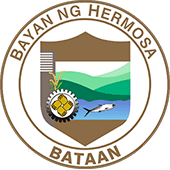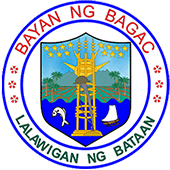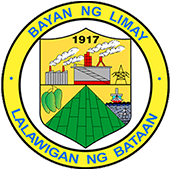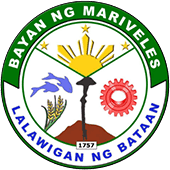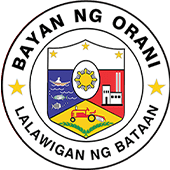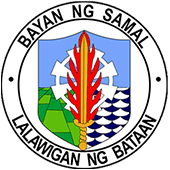Hermosa
- Home
- Hermosa
A Brief History of Hermosa
Legend
A group of Spaniards first came to this place, surprised and amazed they exclaimed, “Que Hermosa! Que Hermosa!, when they saw some pretty maidens with long, black hair washing clothes and bathing in the brook. The boys who accompanied their sisters repeated what they heard from the Spaniards and upon returning home they repeated again and again what the Spaniards exclaimed. When the next group of Spaniards visited the place, they asked for its name. the folks didn’t understand Spanish but answered “Hermosa, Hermosa”. And that was how Hermosa got its name.
Another version was that “Liana Hermosa”, meaning beautiful plain of white flowers was the original name of this town. When the province was created, the town was formally named Hermosa, a name that fits the place not only due to the plain’s white flowers but more so to the beautiful maidens and places that abound the town.
Background
Historically, the town was established in 1756 by the Dominican priests. At that time, it was known as Liana Hermosa and composed of Mabuco and Mabuyan. It became an independent missionary center in 1756 with St. Peter de Verona as its patron saint.
The town of Hermosa was very peaceful and progressive before World War II. When the war broke out, their quiet routine was disturbed. In the famous “death march”, civilians of Hermosa risked the ire of the Japanese by secretly passing food to Filipino and American soldiers.
Elected Officials
Mayor: Anne Lorraine C. Adorable-Inton
Vice-Mayor: Patrick S. Rellosa
Sangguniang Bayan Members:


Contact Us
PRESENT
Hermosa is now a thriving community. With the establishment of the Hermosa Special Economic Zone, many light to medium industries are expected to locate in the area. Hermosa is also famous for their garments, balut and salted eggs, and handpainted jars.
FAST FACTS
Hermosa lies on the northern portion of the province of Bataan about 100 kilometers from Manila. It can be reached within two hours by land from Manila through the North Luzon Expressway and about 45 minutes from Subic and an hour and a half from Clark.
It has a total land area of 15,700.00 hectares representing 11.40% of the entire provincial area. It is composed of 23 barangays with a population of 77,443 as of May, 2020 (2021 SOCIO-ECONOMIC PROFILE 2023).
The municipality of Hermosa is predominantly agricultural. A large portion of the agricultural area, mostly in the lowland, is planted with palay. For 2021 Hermosa produced an annual average of 19,099.84 MT equivalent to 17.78% of the total annual palay production in the province (2021 SOCIO-ECONOMIC PROFILE 2023).
UTILITIES AND AMENETIES
Digital is the major provider of tele-communication services in the municipality. Hermosa is 100% electrified and is being served by the Peninsula electric Company (PENELCO). Bataan is fortunate to have huge natural watersheds that provide sufficient power supply to the province.
Major source of water for domestic use is ground water. Existing water systems are artesian and open wells, pumps and pipeline with tanks. Two barangays are being served by a common facility through the Local Water Utility Administration (LWUA).
Hermosa Rural Bank Inc., Zambales Rural Bank, Inc., Card SME, Inc. serve the banking needs of the municipality (2021 SOCIO-ECONOMIC PROFILE 2023).
Major bus lines and mini-bus coming from Manila, San Fernando and Olongapo pass through the town of Hermosa while the most common type of transport within the municipality are jeepneys and tricycles.
The town has a total of 3 banks, 33 schools (24 Public and 9 Private), 1 Rural Health Unit, 4 Medical & Laboratory Clinic, and 11 inland resorts and 4 historical landmarks (2021 SOCIO-ECONOMIC PROFILE 2023).
Bataan is one of the sources of mangoes for export as evidence by the existence of mangoes for export as evidence by the existence of mango exporters in Hermosa and Dinalupihan.
MAJOR INDUSTRIES
Existing industries in Hermosa are garments, hand painted jars, balut and salted egg making. In the future, fruit processing particularly of mangoes and bananas, handicrafts, stuffed toys and other light industries for export will be dominant in the area with the full operationalization of HSEZ.
PALAY PRODUCTION
As of 2021 (2021 SOCIO-ECONOMIC PROFILE 2023), the area used for rice cultivation is 3,738.87 hectares, resulting in an estimated production of 19,099.84 metric tons or 415,214 cavans. The average yield per hectare is calculated to be 5.11 metric tons or 111 cavans.
Hermosa is highly self-sufficient in its rice supply with a sufficiency level of 194.16%. This indicates that, considering production, post-harvest losses, and actual consumption, the municipality has a surplus of 94.16% in its net yield.
AQUACULTURE
The total area dedicated to aquaculture is 1,507.77 hectares, which is broken down into 3.25 hectares for freshwater fishponds and 1,504.52 hectares for brackish water fishponds (2021 SOCIO-ECONOMIC PROFILE 2023).
FISHERIES
The total number of fishermen in Hermosa is 562, with 450 of them working full-time and 112 working part-time. They operate a total of 200 motorized boats and 50 non-motorized boats (2021 SOCIO-ECONOMIC PROFILE 2023).
INVESTMENT OPPORTUNITIES
Hermosa is home to several industrial parks that offer space for manufacturing and other industrial businesses. With its rich agricultural lands, particularly in rice and corn production, investing in agriculture-related businesses such as farming, poultry, and livestock is a viable option.
This municipality has a growing renewable energy industry with several solar and wind farms in the area, making Hermosa an attractive place to invest in projects pertaining to renewable energy.
As Hermosa is known to be the gateway to other municipalities, investments relating to tourism-related businesses such as hotels, restaurants, and tour operators is an untapped opportunity.
The Bunker
@ The Capitol Compound
Tenejero, Balanga City, Bataan 2100
Mon – Fri: 8:00 am – 5:00 pm

